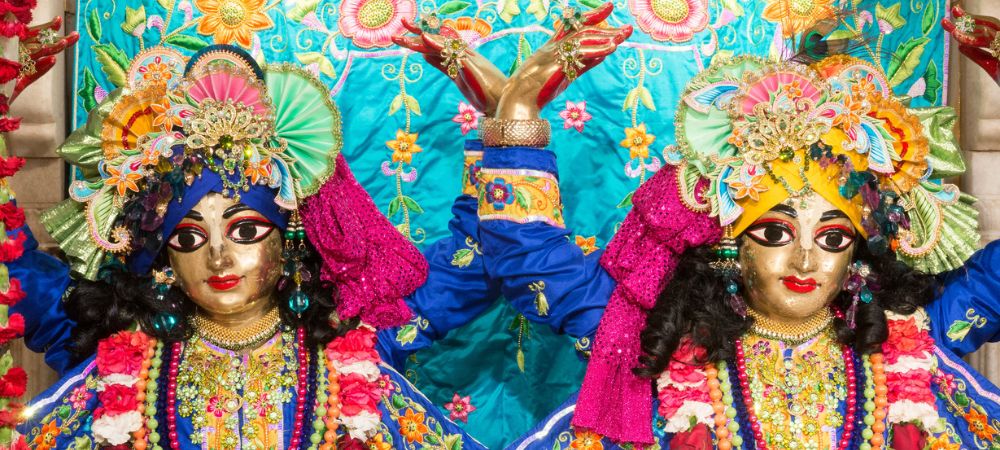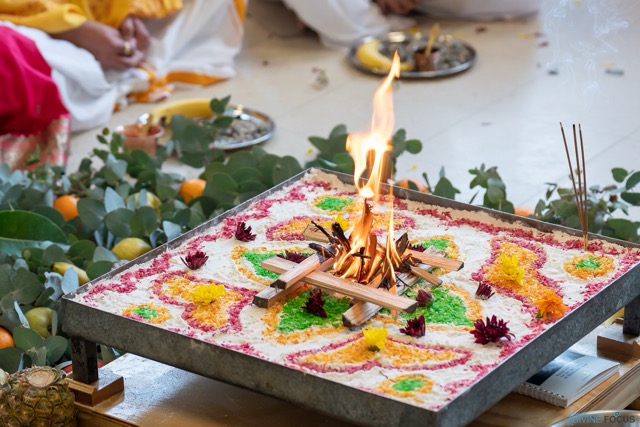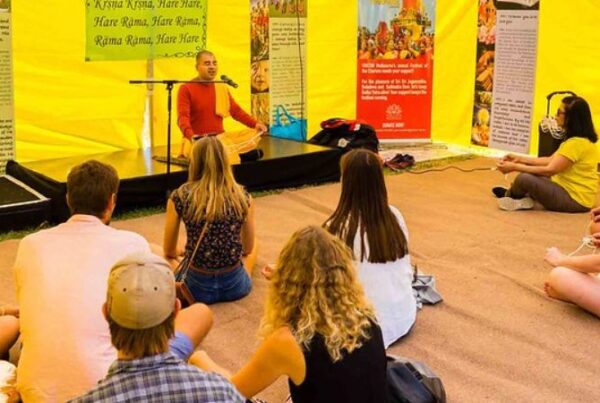Hare Krishna pujas are religious rituals that involve offering various items such as flowers, food, and incense to deities. Pujas are performed to show reverence, devotion, and gratitude to the divine.
These practices are an integral part of Hare Krishna worship, performed in temples, homes, and other sacred spaces. While specific customs may vary, they generally involve chanting mantras, reciting prayers, and performing rituals to invoke blessings.
Hare Krishna pujas are a beautiful way to deepen one’s spiritual connection with the divine.
About Hare Krishna Pujas
While there are many similarities between Hindu and Hare Krishna pujas, there are also some key differences. Hare Krishna devotees worship Lord Krishna and his consort Radha, whereas Hinduism encompasses a wide range of deities and practices. Hare Krishna pujas also involve the use of specific rituals and practices that are unique to the faith, such as the singing of kirtans and the reading of scriptures.
In Hare Krishna tradition, having a priest perform a puja is considered to be a way to ensure that the rituals are conducted with the utmost reverence and devotion. The priest who performs the puja is specially trained in the procedures and the rituals involved, and is believed to have a deeper understanding of the significance and symbolism behind each aspect of the puja.
Additionally, having a priest perform the puja can help to create a sacred atmosphere and establish a deep connection with the divine. It allows the devotee to fully immerse themselves in the worship and receive the blessings of the deities. While it is possible for individuals to perform pujas on their own, having a priest perform the puja can help to ensure that the rituals are conducted in the proper manner and that the blessings of the deities are fully invoked.
Types of Hare Krishna Pujas
The Hare Krishna faith has several pujas (religious ceremonies) that mark different stages of life.
Jata-Karma
Jata-Karma is a ritual that is performed shortly after the birth of a child. This ceremony is considered to be an important milestone in a child’s life, marking their entry into the world and the beginning of their spiritual journey.
During the Jata-Karma ceremony, the child is welcomed into the world and introduced to their family and community. Prayers and blessings are offered to the child, and the parents seek the blessings of the deities for the child’s health, happiness, and success in life.
The Jata-Karma ceremony is intended to be a joyous and auspicious occasion, and is often accompanied by music, chanting, and other forms of celebration. Through this ritual, parents and family members seek to invoke the blessings of the divine and offer their prayers for the child’s spiritual well-being and growth.
Niskramana
In Hare Krishna tradition, Niskramana is a ritual that is performed when a child leaves the house for the first time. This ritual is typically performed when the child is between six months to one year old and is ready to take their first steps outside the home. Niskramana is considered to be another important early milestone in a child’s life and is believed to mark the beginning of their journey towards knowledge and wisdom.
During the Niskramana ceremony, the child is taken outside the home by their parents or other family members. The child is then placed on a piece of cloth or a mat and presented with various objects that symbolise different aspects of the world, such as a book, a mirror, a pen, and a flower. The child is encouraged to touch and explore these objects, which are meant to represent the different facets of life that the child will encounter as they grow and learn.
The Niskramana ceremony is intended to be a joyful and auspicious occasion, and is often accompanied by music, chanting, and other forms of celebration. Through this ritual, parents and family members seek to invoke the blessings of the deities and offer their prayers for the child’s well-being and success in life.
Vidyarambha and Smavartana
Vidyarambha and Samavartana are two important rituals that mark significant milestones in a child’s education.
Vidyarambha is a ritual that marks a child’s formal entry into the realm of education. The ceremony is typically performed when a child is around the age of five or six, as they begin their formal education. During the Vidyarambha ceremony, the child is initiated into the world of learning by writing the first letters of the alphabet, usually in a plate of rice or sand. The child is then blessed by the priest and the parents seek the blessings of the deities for the child’s academic success.
Samavartana, on the other hand, is a graduation ceremony that marks the completion of a child’s formal education. During the Samavartana ceremony, the child is given a sacred thread to wear, marking their transition into adulthood and the completion of their formal education. Prayers and blessings are offered to the child, and the parents seek the blessings of the deities for their child’s future success and happiness.
Vidyarambha and Samavartana are regarded as significant events in one’s life, and are accompanied by prayers, blessings, and celebrations. Through these rituals, parents and family members seek to invoke the blessings of the divine and offer their prayers for the child’s success and well-being.
Vivaha
Vivaha is a marriage ceremony that marks the union of two souls in holy matrimony. The ceremony includes various rituals and prayers, and is usually performed by a priest in the presence of family and friends.
The couple takes vows to support and cherish each other throughout their lives, and seek the blessings of the divine for a happy and prosperous married life. The Hare Krishna tradition places great importance on the concept of “grhastha ashrama,” or the stage of life in which one is a householder, and views marriage as a means of fulfilling one’s duties and obligations in this stage.
Overall, the Vivaha ceremony in the Hare Krishna tradition is a joyous and meaningful celebration of the union of two individuals and the beginning of a new phase of their lives together.
Griha-Pravesa
Griha–Pravesa is a housewarming ceremony that marks the beginning of a new phase of life in a new home. It is performed when a family moves into a new house or after major renovations have been completed on an existing house. The ceremony involves various rituals and offerings made to deities to seek their blessings for a happy and prosperous life in the new home.
The priest performs a “Puja” and recites mantras to purify the house and make it spiritually conducive for the family’s well-being. The Griha-Pravesa ceremony is an important event in the life of a Hare Krishna family, as it marks the beginning of a new phase of their lives in a new or renovated home.
It is a time of celebration and gratitude, as the family seeks the blessings of the divine for a safe, secure, and prosperous home.
Fire ceremony for auspiciousness
Fire ceremony for auspiciousness is a ritual that is performed to invoke the blessings of the Devas for success, prosperity, and well-being. It involves offering ghee, herbs, and other sacred items to the sacred fire, and chanting mantras to invoke the Devas.
The purpose of the fire ceremony is to purify the atmosphere, to create positive energies, and to invoke the blessings of the Devas for success, prosperity, and well-being. The ceremony is usually performed during important occasions such as weddings, housewarmings, and other significant events in life.
Learn More About Hare Krishna Pujas with Hare Krishna Melbourne
If you’re interested in learning more about Hare Krishna and its pujas, you can visit the Melbourne Hare Krishna temple or community centre and participate in the worship services.
You can also read books on the subject, such as the Bhagavad Gita and other scriptures, and explore online resources such as the Hare Krishna Melbourne website and social media channels.
By learning more about Hare Krishna pujas and their significance, you can deepen your understanding and appreciation of this rich spiritual tradition.





